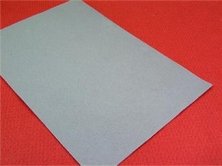
Beschreibung
Frrom-Azur - 1/32 IAR-81C Rumanian fighter - 323 Mircea Dumitrescu, June 1944 - 323 Dumitru Baciu, January 1944 - 369 Nicolae Limburg, June 1944 - 448, April 1945 with roundel - 446, Gheorghe Grecu, July 1944 History: During the early 1930's the Rumanian Air Force adopted the Polish PZL P.11 and similar P.24, both being considered modern designs at the time. These PZL designs were produced under licence by Industria Aeronautica Romana (IAR). By the mid to late 1930's it was clear that war clouds were looming, and that both the P.11 and P.24 were already nearing obsolescence. In 1937 IAR undertook the design of more modern all-metal, low-wing design featuring retractable undercarriage, but retaining much of the P.24's rear fuselage structure. This was named the IAR-80, and was to be powered by a German Junkers Jumo engine. Never delivered, the Jumo was replaced by the IAR 14K-IIc32 fourteen-cylinder, double-row radial, delivering 870-hp. Maiden flight occurred on 4 th of April, 1939. The new fighter had performance approaching that of contemporary foreign designs like the Hurricane, P-36, Morane-Saulnier MS.406 and BF 109D. Various changes to weapons led to the IAR-80A, B and C sub-versions, and also the IAR-81C which was designed for fighter-bomber role during spring of 1941, although it served in both air interceptor and ground attack roles. The IAR-81C was the most numerous sub-version to be produced (from n° 300 to 450), deliveries starting early in 1943. Total production for IAR-80/81 series totalled around 450 units, but ceased after the American bombing of Brasov factory, on April 16th, 1944. Fifty IAR-80's were in service during the attack against Soviet Union, on June 22nd, 1941. 6th Group (61st and 62nd squadrons) and 8th Group (41st and 60th Squadrons) were engaged around Stalingrad front during the autumn of 1942. August 1st, 1943 saw IAR-80 & 81's defending the Ploiesti oil plants from attack by USAAF B-24 Liberators, during 'Operation Tidal Wave', when the Rumanian fighters downed some of the heavy bombers. On June 10th, 1944, IAR-81C's from 6th Fighter Group confronted P-38 Lightnings belonging to the USAAF 82nd and 1st FG (American pilots mistakenly reported having fought Fw 190's). Rumania joined the Allied powers in August 1944, and changed back the national insignia worn by its aircraft from crosses to traditional blue, yellow and red roundels. IAR-81C specifications: single engine low wing monoplane fighter with retractable landing gear. Engine: one IAR K14, 14 cylinder double-row air-cooled radial delivering 870-hp. Wingspan: 11,00m, length: 8,97m, wing area: 16,50m2. Operational ceiling 10,000-m, maximum speed at 5,000-m: 485 kmh. Weapons: 2 x 7,92 mm FN-Browning machine guns & 2 x M.G. 151/20 Mauser 20-mm cannons. Two droppable fuel-tanks could be carried on racks under the wings in place of bombs, plus a 250 kg bomb on a central fuselage rack (Although fitted during manufacture, the fuselage bomb rack seems to usually have been removed after delivery to units). Some references: Rumanian Air Force, the prime decade, 1938-1947, Denes Bernad, Squadron/Signal Publications IAR 80, Dan Antoniu and Georges Cicos, Editions TMA (in french) Rumanian Aces of World War II, Denes Bernad, Osprey Publishing Rumanian Fighter Colours 1941 - 1945, Teodor Liviu Morosanu, Dan Alexandru Melinte, MMP books The I.A.R 80 & I.A.R. 81, Airframe, Systems & Equipment, Radu Brinzan, SAM Publications Note: all IAR 81-C from 300 to 450 were produced after introduction of the olive green topsides / light grey blue undersides. Profiles of such planes with standard dark brown and dark green camouflage on top, light blue undersides would have to be taken with care.
Zugehörige Einkäufe
Kunden, die dieses Produkt gekauft haben, haben auch folgende Produkte gekauft.













